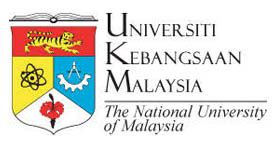Earth Sciences Course in Malaysia : Complete Guide for International Students

- Home
- Specialization
- Earth Sciences
About the Course
Studying Earth Sciences in Malaysia opens doors to understanding our planet's processes, resources, and environmental challenges. Malaysian universities offer various programs catering to different academic levels, including diplomas, undergraduate, postgraduate, and PhD degrees in Earth Sciences. The tuition fees for these courses vary based on the university and program level, with numerous options available for international students.
Why Study Earth Sciences in Malaysia?
- Top Universities: Malaysia is home to several highly ranked universities offering quality education in Earth Sciences, making it an attractive destination for students.
- Diverse Locations: With its unique geography and rich natural resources, Malaysia provides a practical learning environment for Earth Sciences students.
- English Language Requirements: Most programs are offered in English, facilitating international students in their academic journey.
International Students Studying Earth Sciences in Malaysia
Malaysia is an attractive destination for international students due to its diverse culture, welcoming environment, and quality education. The government and universities provide various support services to help international students adjust to their new life in Malaysia. English is widely spoken, ensuring that students can communicate effectively.
Diverse Culture and Welcoming Environment
- Malaysia is known for its multicultural society, which provides an enriching experience for international students.
- The country offers a safe and friendly atmosphere where students from all over the world can thrive.
Quality Education in Earth Sciences
- Malaysian universities are renowned for offering high-quality education, particularly in Earth Sciences fields such as geology, environmental science, and geography.
- Programs are often aligned with international standards, and some universities have strong research components in Earth Sciences.
English as a Medium of Instruction
- English is widely spoken and used as the primary language of instruction in most universities, making it easier for international students to communicate and study.
Affordable Tuition Fees and Cost of Living
- Compared to other study destinations like the UK, the US, and Australia, Malaysia offers relatively affordable tuition fees and a lower cost of living.
International Student Support Services
- Universities provide various support services such as orientation programs, academic assistance, and counseling to help students settle into their new environment.
- Many institutions have dedicated international student offices to address concerns and ensure a smooth transition.
Access to Cutting-Edge Research Facilities
- Malaysian universities offer state-of-the-art labs and facilities for students in Earth Sciences, allowing hands-on experience and involvement in global research projects.
Strategic Location for Geosciences Studies
- Malaysia’s geographical location in Southeast Asia provides an excellent opportunity for students to study the region’s unique geological features, including tropical rainforests, seismic activity, and biodiversity.
Multinational Networking Opportunities
- Malaysia attracts international students from various countries, allowing students to network with peers and professionals from diverse cultural and academic backgrounds.
Scholarships and Financial Aid
- Various scholarships and financial aid options are available for international students, making it more accessible for them to pursue studies in Earth Sciences in Malaysia.
Post-Graduation Opportunities
- Malaysia’s growing industries in oil and gas, environmental management, and natural resource sectors offer career opportunities for Earth Sciences graduates.
Living Cost to Study Earth Science Course in Malaysia
| Expense Category | Estimated Monthly Cost (RM) |
|---|---|
| Accommodation | RM 400 - RM 1,500 |
| Food | RM 300 - RM 600 |
| Transportation | RM 100 - RM 300 |
| WiFi/Internet | RM 80 - RM 150 |
| Miscellaneous | RM 200 - RM 400 |
Comparison of Animal Science Courses in Malaysia vs US and UK
| Criteria | Earth Science Courses in Malaysia | Earth Science Courses in the US | Earth Science Courses in the UK |
|---|---|---|---|
| Intake Periods | January and July | Varies by university (typically Fall and Spring) | September (most common) |
| Entry Requirements | SPM/O-level for Diploma; A-level/STPM for Bachelor’s | High School Diploma + SAT/ACT; Bachelor's for Master's/PhD | A-levels for Bachelor’s; Master’s requires relevant undergrad |
| Tuition Fees | MYR 10,000 - MYR 50,000 per year | $20,000 - $50,000 per year (varies by institution) | £15,000 - £30,000 per year (varies by university) |
| Program Duration | 2-3 years for Diploma, 3-4 years for Bachelor's, 1-2 years for Master's | 4 years for Bachelor’s, 1-2 years for Master’s, 3-7 years for PhD | 3 years for Bachelor’s, 1-2 years for Master’s, 3-4 years for PhD |
| Scholarships & Financial Aid | Malaysia International Scholarship, University-specific grants | Federal and University Scholarships, Assistantships | Government-funded scholarships (Chevening), University grants |
| Accreditation | Accredited by Malaysian Qualifications Agency (MQA) | Accredited by regional and national accreditation bodies (e.g., WASC) | Accredited by UK’s Quality Assurance Agency (QAA) |
| Job Opportunities | Geological technician, environmental consultant, researcher | Geologist, environmental consultant, researcher, policy advisor | Geologist, environmental consultant, policy advisor, academic roles |
| Post-graduation Work Opportunities | Limited; requires a work permit for international students | Optional Practical Training (OPT) available for international students | Graduate visa allows work for up to 2 years after graduation |
| Mode of Study | Full-time, part-time, online options | Primarily full-time; some online options available | Full-time; some part-time options available |
| Research Opportunities | Research in environmental conservation, geology, and natural resources | Extensive research in various Earth Science subfields | Focus on sustainable development, climate change, and resource management |

Top Universities in Malaysia offering Earth Science courses:
- University of Malaya (UM)
- Universiti Kebangsaan Malaysia (UKM)
- Universiti Sains Malaysia (USM)
- Universiti Teknologi Malaysia (UTM)
- Universiti Putra Malaysia (UPM)
- Monash University Malaysia
- Taylor’s University
- Universiti Malaysia Sarawak (UNIMAS)
- Universiti Teknologi Petronas (UTP)
Education Levels of Earth Sciences
| Education Level | Diploma in Earth Sciences | Bachelor’s in Earth Sciences | Master’s in Earth Sciences | PhD in Earth Sciences |
|---|---|---|---|---|
| Intakes | January, July | January, September | January, September | Throughout the year |
| Entry Requirements | SPM or O-Levels (Science & Math subjects) | STPM, A-Levels, or equivalent qualifications | Relevant undergraduate degree (e.g., Geology, Environmental Science) | Master's degree in related field (e.g., Earth Sciences, Geophysics) |
| Tuition Fees | MYR 10,000 – MYR 20,000 per year | MYR 25,000 – MYR 45,000 per year | MYR 30,000 – MYR 50,000 per year | MYR 20,000 – MYR 40,000 per year |
| Career Opportunities | Geological Technician, Environmental Consultant, Field Surveyor | Geologist, Environmental Scientist, Resource Manager | Research Scientist, Project Manager, Senior Environmental Consultant | University Professor, Advanced Researcher, Senior Consultant |
| Program Focus | Practical skills, fieldwork, data collection, environmental monitoring | Research, environmental conservation, resource management | Advanced research, project management, environmental sustainability | Independent research, academic or advanced consultancy roles |
Diploma in Earth Sciences in Malaysia
- Intakes: Diploma programs in Earth Sciences in Malaysia generally have intakes in January and July. These intakes provide flexibility for students to begin their studies at different points in the year.
- Entry Requirements: To qualify for a diploma in Earth Sciences, applicants must have SPM or O-level qualifications. Specific requirements include a minimum grade in relevant subjects such as Science and Mathematics, which are crucial for the field of Earth Sciences.
- Tuition Fees: The tuition fees for diploma courses typically range from MYR 10,000 to MYR 20,000 per year. The cost depends on the institution and the level of facilities provided. This is a more affordable option compared to higher education degrees, making it accessible to many international students.
- Career Opportunities: After completing a diploma in Earth Sciences, graduates can find jobs as geological technicians, environmental consultants, or field surveyors. These roles generally require hands-on work in research, data collection, or environmental monitoring, providing students with practical skills for the workforce.
Bachelor’s in Earth Sciences in Malaysia
- Intakes: Bachelor’s degree programs in Earth Sciences are usually available in January and September, offering two opportunities for students to begin their studies each year.
- Entry Requirements: Applicants need to meet the academic requirements of STPM, A-levels, or equivalent qualifications. Some universities may accept students who have completed foundation courses or pre-university programs. Strong performance in subjects such as Mathematics, Physics, or Chemistry is often a prerequisite for admission into these programs.
- Tuition Fees: The tuition fees for a Bachelor’s in Earth Sciences typically range from MYR 25,000 to MYR 45,000 annually. The cost can vary depending on the university and its reputation. Scholarships or financial aid may be available to help offset tuition costs.
- Career Opportunities: Bachelor’s graduates in Earth Sciences have the opportunity to pursue various careers such as geologists, environmental scientists, and resource managers. These professionals work in sectors like mining, construction, environmental conservation, and resource management, conducting research, environmental impact assessments, or managing natural resources.
Master’s in Earth Sciences in Malaysia
- Intakes: Master’s degree programs in Earth Sciences are typically offered in January and September, providing flexibility in starting your advanced studies.
- Entry Requirements: To be eligible for a Master’s in Earth Sciences, applicants must possess a relevant undergraduate degree in a related field, such as geology, environmental science, or geophysics, with a minimum CGPA. In some cases, work experience in related fields may be required. Applicants may also need to submit a research proposal depending on the program.
- Tuition Fees: The tuition fees for a Master’s degree in Earth Sciences generally range from MYR 30,000 to MYR 50,000 annually. This cost can be affected by factors such as the university’s ranking and the specific nature of the program (e.g., research-based or coursework-based).
- Career Opportunities: Graduates of Master’s programs can pursue roles as research scientists, project managers, or senior environmental consultants. These positions typically involve leading or contributing to research projects, managing teams, or overseeing environmental compliance and sustainability projects in various industries.
PhD in Earth Sciences in Malaysia
- Intakes: PhD programs in Earth Sciences are offered throughout the year, allowing students to start their research programs at any time.
- Entry Requirements: To apply for a PhD, candidates must have a Master’s degree in a related field, such as Earth Sciences or Environmental Science. A research proposal may also be required as part of the application process. PhD students are expected to conduct independent research in their chosen area of specialization.
- Tuition Fees: The tuition fees for a PhD in Earth Sciences typically range from MYR 20,000 to MYR 40,000 annually. While this may seem high, many universities offer research funding or assistantships that help offset the costs for students engaged in long-term research projects.
- Career Opportunities: PhD holders in Earth Sciences often pursue academic roles as university professors or researchers. Other career options include working as advanced researchers in think tanks, government agencies, or private consultancy firms, where they provide expertise in complex environmental, geological, and scientific issues.
Career Prospects of Earth Sciences in Malaysia
The demand for Earth Science professionals is increasing in Malaysia due to the country’s focus on sustainable development and environmental management. Graduates can explore a wide array of career opportunities in the following areas:
- Growth of Earth Sciences Jobs in Malaysia: The job market for Earth Sciences professionals is expanding, driven by various sectors such as environmental consulting, resource management, and research.
- Salary of Earth Scientists in Malaysia: Salaries vary by position and experience, but the potential for high earnings exists, particularly in specialized fields.
- Demand for Earth Sciences Professionals: There is a consistent demand for qualified professionals in industries such as oil and gas, mining, environmental protection, and academia.
- Top Earth Sciences Firms in Malaysia: Several leading firms actively seek skilled Earth Sciences graduates, providing ample employment opportunities.
Application Process
- Research: Identify universities offering Earth Science courses and select the preferred program.
- Prepare Documents: Gather necessary documents, including academic transcripts, English proficiency test scores, and letters of recommendation.
- Submit Application: Apply directly through the university's website or through a representative.
- Receive Offer Letter: Successful applicants will receive an offer letter detailing enrollment conditions.
Visa Process
- Receive Offer Letter: Upon acceptance, obtain your offer letter from the university.
- Visa Application: Apply for a student visa at the Malaysian embassy or consulate in your home country.
- Documents Needed: Include your offer letter, passport, photographs, and proof of financial capability.
- Visa Approval: Once your visa is approved, you can make arrangements to travel to Malaysia.
Application Timeline for International Students in Malaysia
| Application Timeline | Details |
|---|---|
| Main Intakes | January, May, and September are the primary intake months. |
| Application Preparation | Start applications 6-8 months prior to intake to allow time for documents, visa processing, and financial planning. |
| Key Scholarships | Malaysia International Scholarship (MIS) and various university-specific grants are available. |
| Scholarship Benefits | MIS covers partial tuition fees and provides monthly allowances, helping students manage living expenses. |
| Additional University Grants | Many universities offer merit-based scholarships, with specific eligibility requirements. Checking individual universities can reveal more options. |
| Recommendation | Early research and applications are advised for better chances at scholarships. Confirming application and scholarship deadlines with chosen universities helps in planning and securing financial aid. |
Scholarships for International Students in EARTH Science in Malaysia
Government Scholarships:
- Malaysian Government Scholarships: Various scholarships are available for international students pursuing Earth Science studies, such as the Malaysia International Scholarship (MIS).
- ASEAN Scholarships: Offered by the Malaysian government to promote educational cooperation with ASEAN member countries.
University-Specific Scholarships:
- University of Malaya (UM): Offers scholarships and financial aid for international Earth Science students through programs like the UM Student Financial Aid.
- Universiti Kebangsaan Malaysia (UKM): Provides international scholarships to top-performing students in programs like Earth Sciences and Environmental Studies.
- Universiti Sains Malaysia (USM): Known for offering graduate research assistantships and scholarships, particularly in scientific research fields.
Industry-Sponsored Scholarships:
- Petronas Scholarships: Petronas, Malaysia’s oil and gas company, provides scholarships to students in fields related to Earth Science, particularly in geology and environmental science.
- Shell Malaysia Scholarship: Offers financial support for students in the Earth Science sector, focusing on geology and geophysics.
Organization and NGO Scholarships:
- Commonwealth Scholarships: Available for students from Commonwealth countries, offering funding for Earth Science and related programs.
- Asian Development Bank (ADB) Scholarships: Provides funding for postgraduate Earth Science students from developing countries.
Research and Project-Based Funding:
- Malaysian Research Universities: Many universities offer project-based funding for Earth Science research programs.
- Research Collaboration Grants: Some international and local organizations provide grants for research-focused students in Earth Science.
Specialized Scholarships:
- Environmental Science and Earth Studies: Universities and environmental organizations may offer specialized scholarships for programs focusing on sustainability, climate change, and environmental sciences.










